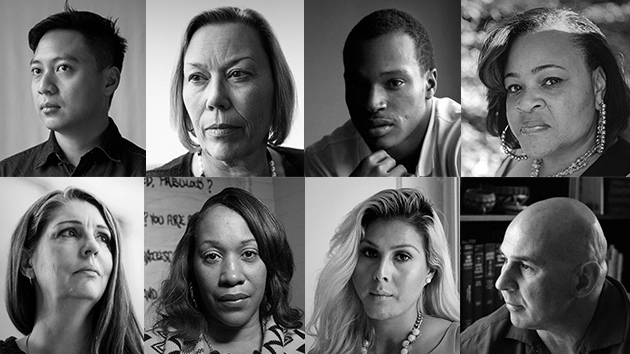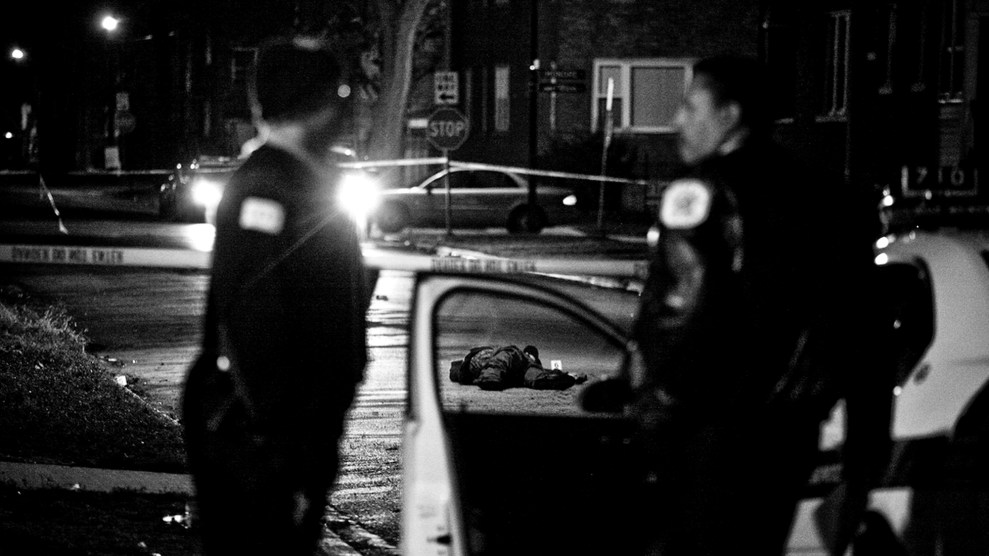
Below is a more detailed explanation of our data investigation, done in collaboration with economist Ted Miller of the Pacific Institute for Research and Evaluation. Read our full special report here.
Direct costs
Police
This is an estimate of the money that police departments spend to respond to and investigate gun-related crimes. It includes police salaries, benefits, and equipment, as well as overhead costs to the police department. Miller based this calculation on the amount of time police spent on initial response and follow-up (based on this sample survey) and the amount of money police departments spend on average per officer (including fringe benefits, equipment, supervision, etc.) using data from the 2006 Census of Governments.
Emergency transport
This is the cost of the labor and equipment involved in transporting victims of gun violence to the hospital. Miller calculated the likelihood that each type of victim (fatal or injured) would reach the hospital via emergency transport using data from a national sample of emergency room visits. The cost of transport was based on a GAO survey from 2010, which was then updated to 2012 dollars. The median cost of emergency transport for an individual injury or fatality was $452.
Medical
This is the cost of treating victims of gun violence in the hospital and post-discharge. It includes the hospital service and insurance claims processing fees paid by Medicare, Medicaid, private insurance, and the victims themselves. Hospital costs are based on a database of 40 to 50 million healthcare claims from the Healthcare Cost and Utilization Project, insurance costs come from data collected by the Center for Medicare and Medicaid Services, and post-discharge costs are based on medical expense data collected by the Department of Health and Human Services and the National Council on Compensation Insurance.
Mental health
This refers to the cost of counseling for victims of gun violence and their families. It includes the services paid by Medicare, Medicaid, private insurance, and the victims themselves. The number of people seeking mental health services per gun violence incident (death or injury) and the cost for these services are based on Ted Miller and Mark Cohen’s 1998 survey of 168 mental health counselors—including psychologists, psychiatrists, social workers, and pastoral counselors—which found that for every murder victim, 1.5 to 2.4 people sought mental health treatment.
Legal services and adjudication
This is the cost of legal and adjudication services for perpetrators of homicide and aggravated assault, including salary of the judges and public defenders, and other overhead costs of operating a courthouse. These costs are based on a 2010 study by Kathryn McCollister et al, which examined Bureau of Justice Statistics and FBI data to calculate local, state, and federal government expenditures on legal services for homicides and aggravated assaults. Miller’s estimate assumes that legal and adjudication costs do not apply to unintentional deaths or injuries, legal interventions, or suicides.
Incarceration
This is the estimated amount of money needed to incarcerate perpetrators (convicted in 2012) of homicides or aggravated assaults over the course of their sentences. These estimates are based on a 2010 study by Kathryn McCollister et al, which examined Bureau of Justice Statistics and FBI data to calculate local, state, and federal government expenditures on incarceration of perpetrators of firearm homicides and assaults. Here again Miller assumes that incarceration costs do not apply to unintentional deaths or injuries, legal interventions, or suicides.
Indirect costs
Work costs for victims and perpetrators
This refers to the potential wages and household productivity that were lost due to a death or injury. Miller estimated lost wages of victims and imprisoned perpetrators using expected earnings data from the Current Population Survey (US Census), data on the duration of temporary disabilities from the Annual Survey on Workplace Injuries (Bureau of Labor Statistics), and workers compensation data on the probability of permanent disabilities by the type of injury. Lost household productivity is estimated using a 2009 study based on the Bureau of Labor Statistics’ American Time Use Survey. In both estimates, Miller assumes that victims and perpetrators make the same amount of money and are as productive as the typical American in their gender and age group.
Costs to the employer
This refers to the costs other than benefits that an employer incurs when a worker leaves employment permanently or temporarily because of injury. It captures costs of workplace disruption, rehiring and retraining, overtime to meet production schedules, and investigation and reporting of on-the-job incidents. This number is based on estimates of employer costs by injury severity used by both the National Highway Traffic Safety Administration and the Consumer Product Safety Commission.
Losses in quality of life
This is an estimate of the financial value of the pain, suffering, and fear that accompany a death or injury. Miller concludes that a life is worth about $6.2 million, which is a violence-specific average based on the amounts awarded by juries in wrongful injury and death cases. It includes lost wages and household production.












